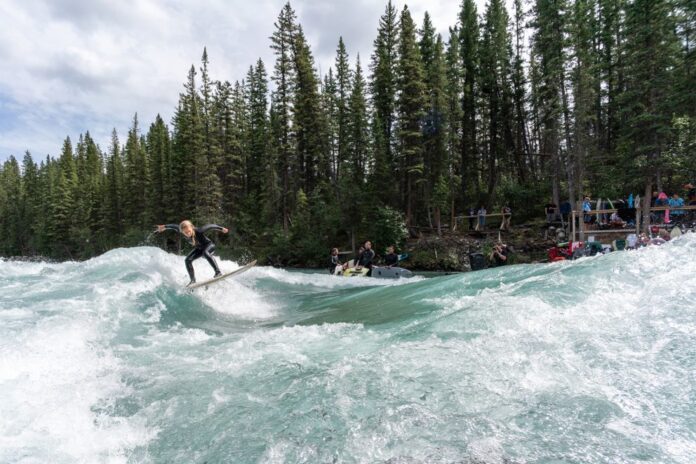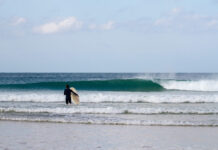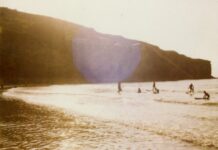What are the different types of river waves?
Artificial river waves are currently only perpendicular, whereas natural river waves have lefts, rights, perpendicular, a-frames, barrels, flat waves, steep waves, shallow waves, deep waves, and more. Surf Anywhere’s latest research and design focused on creating new artificial wave shapes with simple, cost-effective, and public designs; it demonstrated how simple structures can reliably make different wave shapes. The design – called the multi adjustable kicker system – comes in two primary configuration types:
- Flat bottom for controlled tailwater that produces a very wide range of wave shapes.
- Ramp bottom that consistently creates great waves when there is uncontrolled and highly variable tailwater.
Each configuration type can produce different wave shapes, including lefts, rights, bowls, and A-frame. With real-time adjustability, the wave shapes can transform while the surfer is on the wave. Both wave styles can make good surf waves and good kayak waves, which allows usage by another user group. The flat bottom design provides a wider variety of wave shapes. The kicker sled provides simple adjustability and good waves for large changes in tailwater.
What do you have to think about when building surf river wave?
The focus is on finding a good location/spot, building a team/support/awareness, and raising funds. The design is far down the list of importance because there are already great design options such as what Surf Anywhere is researching and detailing on our website. That said, there are still some critical design requirements:
- 4 m/s water velocity or higher.
- About 1m of drop will provide this velocity.
- 1 m3/s of flow per meter of width or higher.
- The smallest viable wave width is 5.m, which requires a minimum flow of 5 m3/s.
- Adjustability.
- Waves are very sensitive to changes in tailwater, wave structure angles, and flow per width.
- Proper adjustability guarantees a good wave.
- Easy and permitted dewatering.
- Wave structure maintenance and inspection are much easier if the wave structure can be dewatered.
- Larger adjustments such as attaching contours to the wave structure to create a wider range of wave shapes or changing the channel width can only be done if the wave is dewatered.
- Dewatering on demand often needs to be included in the permitting submissions.
- Sediment deposition management.
- Rivers carry and drop huge amounts of sediment which changes flow patterns and water levels. The wave design needs to account for sediment movement and be able to adjust for it.





